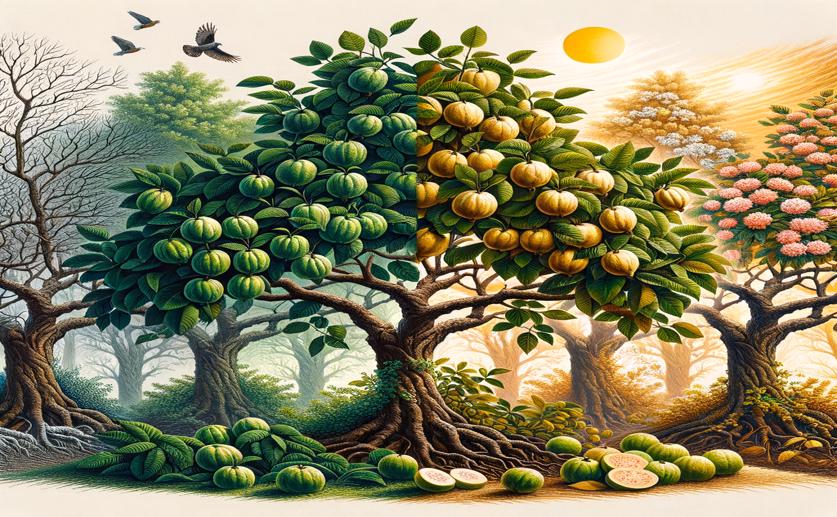
How Pruning Affects Guava Harvest Quality and Yield Throughout the Seasons
Greg Howard
2nd August, 2024

Image Source: Natural Science News, 2024
Key Findings
- Researchers at Bangabandhu Sheikh Mujibur Rahman Agricultural University found that strategic pruning improves guava yield and quality
- Pruning in spring led to the highest fruit yield in the June-August quarter, while autumn pruning favored the March-May quarter
- The best fruit quality, with high TSS, sugars, and vitamin C, was achieved with 45 cm pruning in the March-May quarter
FruitsAgriculturePlant Science
References
Main Study
1) Dataset explaining the comparative seasonal crop load and harvest quality of guava upon pruning strategies.
Published 31st July, 2024
https://doi.org/10.1016/j.dib.2024.110733
Related Studies
2) Pruning techniques affect flowering, fruiting, yield and fruit biochemical traits in guava under transitory sub-tropical conditions.



 31st May, 2024 | Jenn Hoskins
31st May, 2024 | Jenn Hoskins